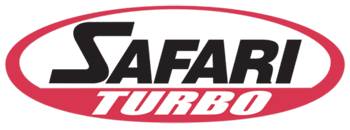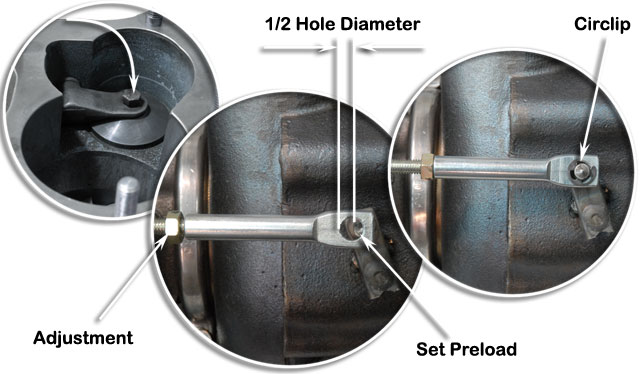
Safari Turbocharger System Tuning
| Tuning Guide | ||
| 1 | Main fuel screw: this is the main adjustment for total fuel delivery. Adjustment of the main fuel screw will effect fuel under all engine conditions (idle, no boost, full boost and high speed) turning the screw inwards (clockwise) will increase fuel, outwards (anticlockwise) will decrease fuel delivery.
Some injector pumps are fitted with a metal anti-tamper cover over the main fuel screw. This cover must be removed and discarded in order to adjust the main fuel screw. Some injector pumps are fitted with an anti-tamper tie-wire over the main fuel screw. This tie wire must be cut, removed and discarded in order to adjust the main fuel screw. |
 |
| 2 | The preferred tuning method is carried out on a chassis dynamometer using exhaust gas temperature (EGT), air fuel ratio (AFR) and boost pressure.
The other method is to perform the tuning on the road but this can be time consuming and potentially dangerous. Moreover, it will require the operation of the vehicle brakes and full throttle simultaneously in order to maintain the required RPM/full load/full throttle operating parameters for the required period of time. Operation of brakes and throttle simultaneously may be illegal in some countries and IS DANGEROUS. Sufficient vehicle rest time is required in order for the brakes to cool sufficiently between tests. |
 |
| 3 | The first step is to achieve the correct EGT, AFR and boost pressure at 1,000 rpm.
To begin with, loosen the main set screw locking nut and turn the main set screw clockwise by 1/8 turn. Hold the engine at full load in 4th gear at 1,000 rpm (full throttle) for 1 minute and record the AFR, EGT and Boost Pressure. If AFR number is higher than specification turn the main fuel screw clockwise by 1/16 turn (increase fuel - decrease AFR number) If AFR number is lower than specification, turn the main fuel screw anticlockwise by 1/16 turn (decrease fuel - increase AFR number - safer engine operation). |
 |
| 4 |
The next step is to achieve the correct EGT, AFR and boost pressure at 3,000 rpm. Hold the engine at full load in 3rd gear at 3,000 rpm (full throttle) for 1 minute and record the AFR, EGT and Boost Pressure.
If boost pressure is not within specifications the wastegate actuator will require adjustment. Please note: EGT and AFR will affect the final boost pressure. Ensure that these parameters are close to specification before boost pressure adjustments are made. If significant changes to boost pressure are required, repeat step 4 (Tuning at 3,000 rpm). |
|
| 5 |
Boost Level: 10-12psi @ 3000RPM full load/full throttle measured at intake manifold or crossover duct.
|
 |
| 6 | Check high speed governor by running vehicle in 2nd gear, no load, full throttle. Check maximum rpm and adjust high speed screw as required to achieve factory specification. ( typically 4200 - 4300 rpm ).
Check and adjust idle speed screw in accordance with the factory service manual to achieve factory specification. (typically 600-650rpm). If fitted, check and adjust air conditioning idle up actuator as per factory specifications (typically 700-750rpm). |
 |